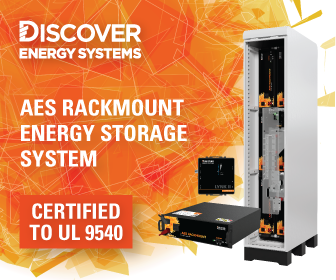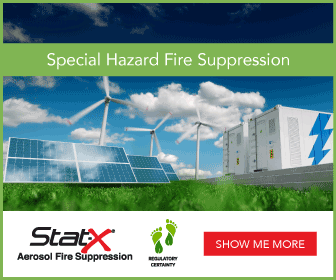NAATBatt Forms Zinc Battery Committee, Increased Demand for Lead-Acid Battery Replacement to Spur Growth in Zinc Market
ZAF Energy Systems Inc. (ZAF), a developer of next-generation battery technology, announced it is a charter member of the Zinc Battery Sub-Committee formed by the National Alliance for Advanced Transportation Batteries (NAATBatt). The Committee will raise awareness of and create collaborative alliances between zinc-based battery manufacturers and their supply chains. Zinc will play a critical role in the future growth of energy storage, and NAATBatt's Zinc Committee will provide the leadership and platform needed to accelerate industry adoption.
ZAF and NAATBatt recognize that the global appetite for zinc is increasing. This is due in part to demand for a safer, more efficient replacement for legacy lead-acid batteries in the transportation sector. The International Lead and Zinc Study Group (ILZSG) recently reported that global usage of refined zinc rose by 1.2 percent in the first ten months of 2017 and is expected to increase by 2.5 percent in 2018.
"The entire transportation market is set for major disruption with the growth of EVs and emerging technologies like ZAF Energy's zinc-based battery chemistry," said NAATBatt Chairman Robert Galyen. "An environmentally friendly, non-toxic lead-acid replacement would be a game-changer, particularly with the increased power and capacity that ZAF's nickel-zinc battery provides."
According to ILZSG, global consumption of zinc was 13,861,000 tons in 2016 with global demand expected to increase to 14,280,000 tons in 2018. Battery manufacturers producing zinc-based technology primarily use zinc oxide (ZnO), which is currently used in the production of tires and ceramics. In 2016, approximately 1,700,000 tons of ZnO were consumed with the tire industry making up 56 percent of consumption. With zinc oxide producers looking for other large volume customers, the zinc-battery industry is the logical strategic partner.
"Full-scale commercialization of our nickel-zinc batteries could increase demand for zinc oxide by over 500,000 tons," said ZAF President and CEO Randy Moore. "That's a 30 percent increase based on ZAF alone and doesn't include demand from other emerging zinc-based battery technologies such as ViZn Energy Systems' zinc-iron redox flow battery. What also makes zinc highly attractive as a battery chemistry is that it is globally abundant in far higher quantities than lead or lithium, including about 14 million tons of reserves in the United States alone, and it is far cheaper than other high-availability metals such as copper."
ZAF's nickel-zinc battery weighs 20 percent less yet yields twice the storage capacity and two times the power of conventional lead-acid batteries used for commercial trucking, start-stop delivery vehicles, and deep-cycle industrial and recreational applications. On a cost per kilowatt/hour basis, it is half the cost of lead acid. ZAF's batteries use sustainable, abundantly available materials that are recyclable, providing long-life and economical solutions for many applications.
Randy Moore will be speaking at the NAATBatt 2018 Annual Meeting and Conference on March 19-22, 2018 in San Antonio, Texas. Craig Wilkins, Founder of ZAF Energy Systems, will be speaking on March 22-23, 2018 at the 22nd Zinc & its Market Seminar by Metals Bulletin in London, England.
NAATBatt members and non-members interested in serving on the Zinc Battery Sub-Committee should contact Jim Greenberger.
ZAF Energy Systems | www.zafsys.com











